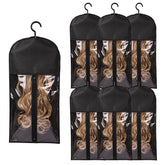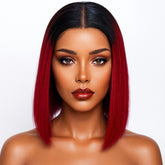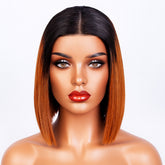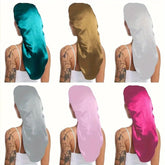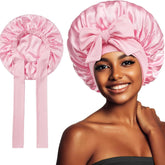What Our Hair Reveals About Identity and Change

From sudden dye jobs at the weekend to the slow psychology of grown-out roots, the way people style, cut and treat their hair often maps personal narratives. Hair carries aesthetic, social and cultural signals: it can mark rites of passage, political stances, professional choices or simply changes in mood. This article examines why hair matters, how choices around colour and texture function as communication, and what practical and cultural forces shape those choices.
Hair as a personal and social narrative
People treat hair as more than a practical matter. Long hair, short hair, shaved heads, curls or chemically straightened strands frequently become shorthand for identity. Those decisions are rarely made in isolation: family histories, cultural norms and workplace expectations all play a part.
Psychologists and sociologists describe hair as an externalised form of identity work — a visible way to perform stability, rebellion, maturity or liberation. For example, a student might cut their hair to signal a new phase at university; someone recovering from illness may grow hair long again as a marker of regained health. In many communities, hairstyles are heirlooms of cultural memory: certain braiding styles, for instance, carry centuries of meaning across diasporas.
Colour, change and the language of styling
Colour is one of the clearest signals. A dramatic dye job can announce a break with the past, an experiment with self-expression, or simply engagement with fashion. Conversely, the decision to let colour fade or to revert to a natural shade often reflects different priorities — professional conservatism, cost considerations, or a desire for authenticity.
Styling choices also operate as social cues. A polished blowout or a conservative cut may align with corporate norms, while alternative textures and cuts can signal affiliation with particular subcultures or aesthetic communities. Social media has accelerated these signals: trends spread quickly, but so does commentary — praise, critique and policing of what is considered appropriate in many settings.
- Hair changes can mark life transitions — graduation, mourning, recovery or new relationships.
- Colour choices communicate mood, alignment with trends, or political and social identity.
- Texture and styling decisions often reflect cultural heritage or responses to workplace norms.
- Economic and practical factors — time, cost, access to salons and products — shape what is possible.
Practical realities behind appearance
Beyond symbolism, practical realities heavily influence hair decisions. Maintaining a vivid shade requires regular touch-ups and specialised products; textured hair may need different care routines and professional expertise not always readily available. Accessibility and cost are therefore important: not everyone has the time, money or local services to maintain a particular look.
Health and hair intersect too. Treatments such as bleaching or repeated heat styling can damage hair, prompting people to shift toward low-maintenance styles or protective routines. Workplace regulations also matter. In professions with strict dress codes, hair can become a site of negotiation between self-expression and occupational expectations — a tension that has prompted legal and corporate policy discussions in several countries.
Why it matters
Hair is an intimate cultural object. Its importance goes beyond vanity: it is bound up with identity, belonging and power. Decisions about hair can reveal wider social dynamics, including how societies regulate bodies, the persistence of aesthetic hierarchies, and the uneven distribution of access to professional services and markets.
Public conversations around hair also illuminate issues of discrimination. In recent years, legal challenges and policy changes in workplaces and schools have highlighted how certain hairstyles — particularly those associated with specific ethnic groups — were policed or deemed inappropriate. Such controversies have prompted broader cultural reflection about inclusion and the need for institutions to recognise diverse standards of professionalism.
At the same time, hair remains a site of creativity and resilience. People adapt styles to suit changing lives, invent new looks as forms of play or protest, and reclaim traditional techniques as acts of cultural affirmation. Whether through a quietly maintained routine or an eye-catching transformation, hair reflects both personal history and changing social norms.

